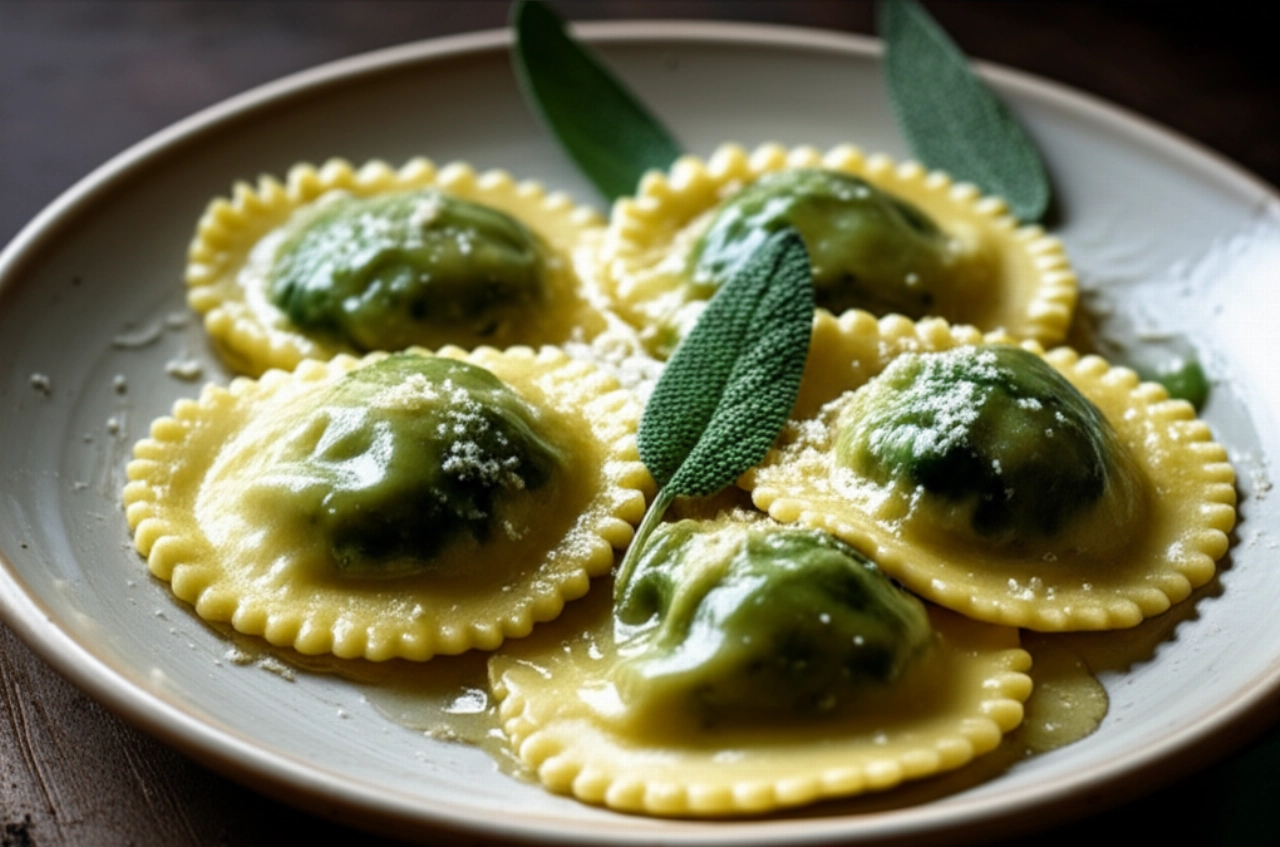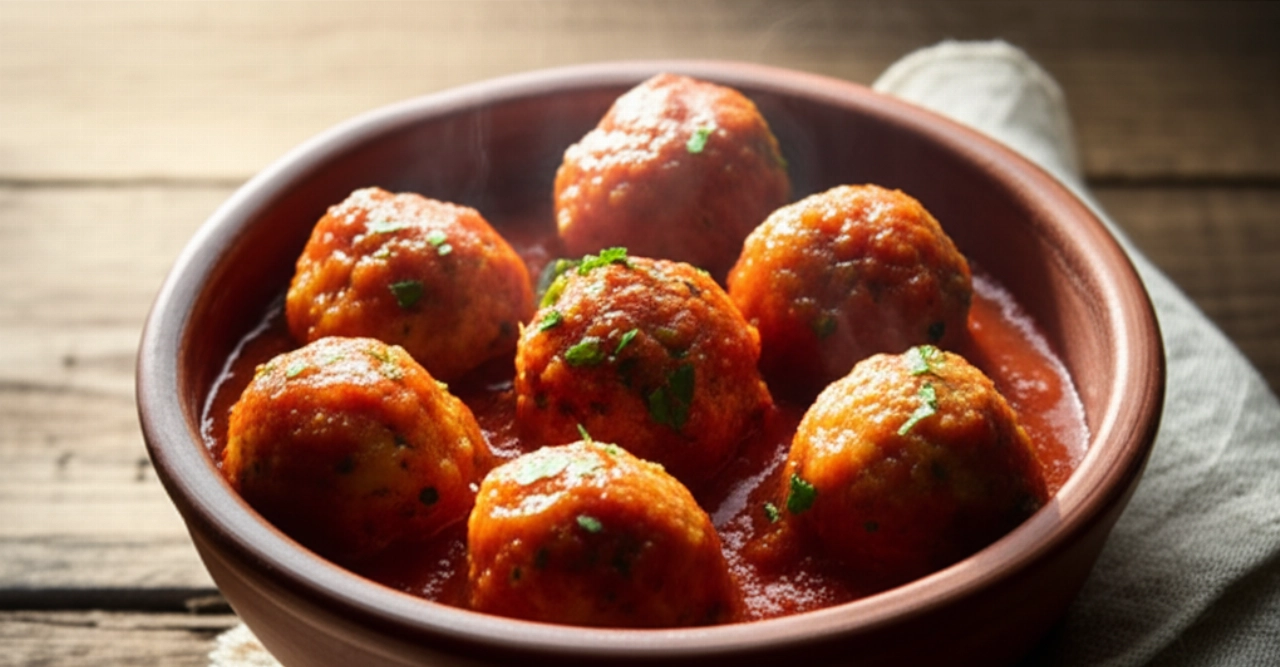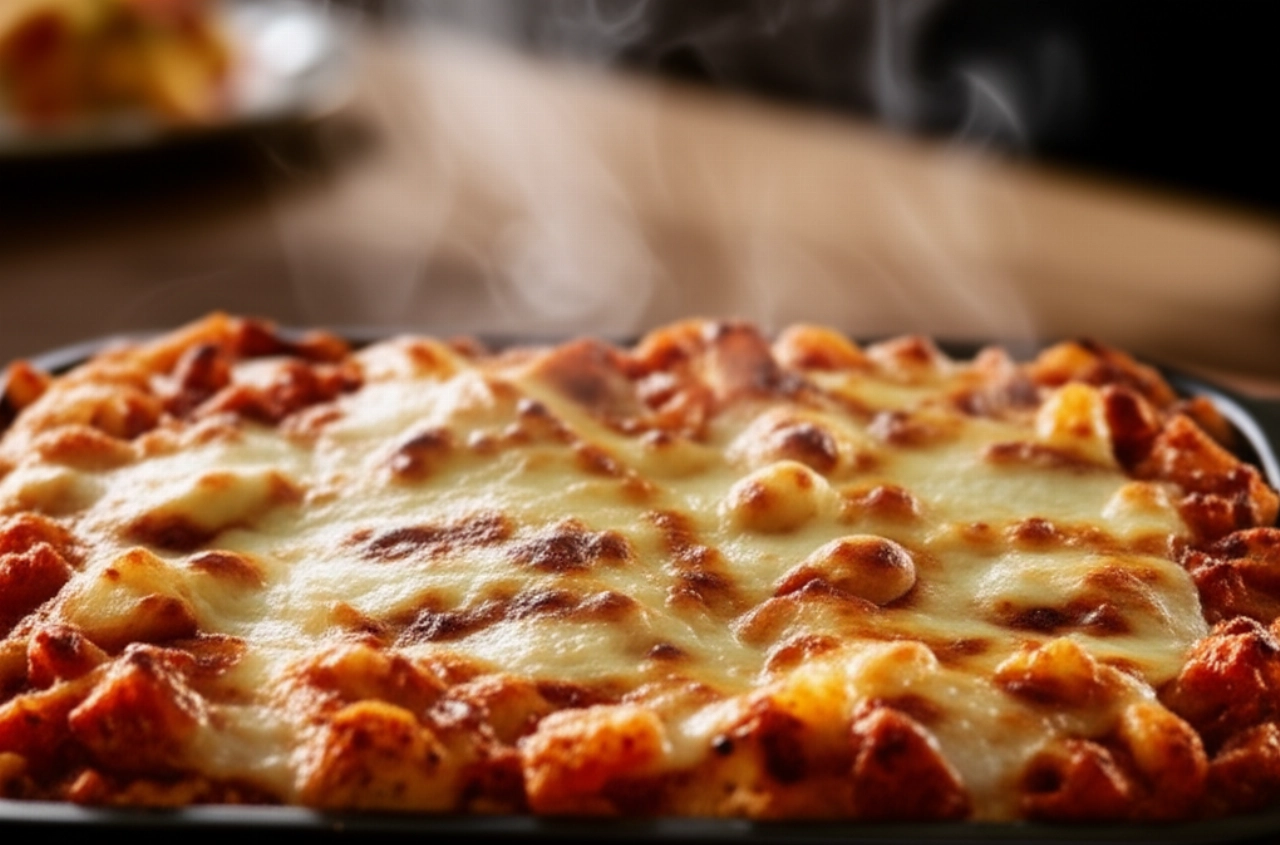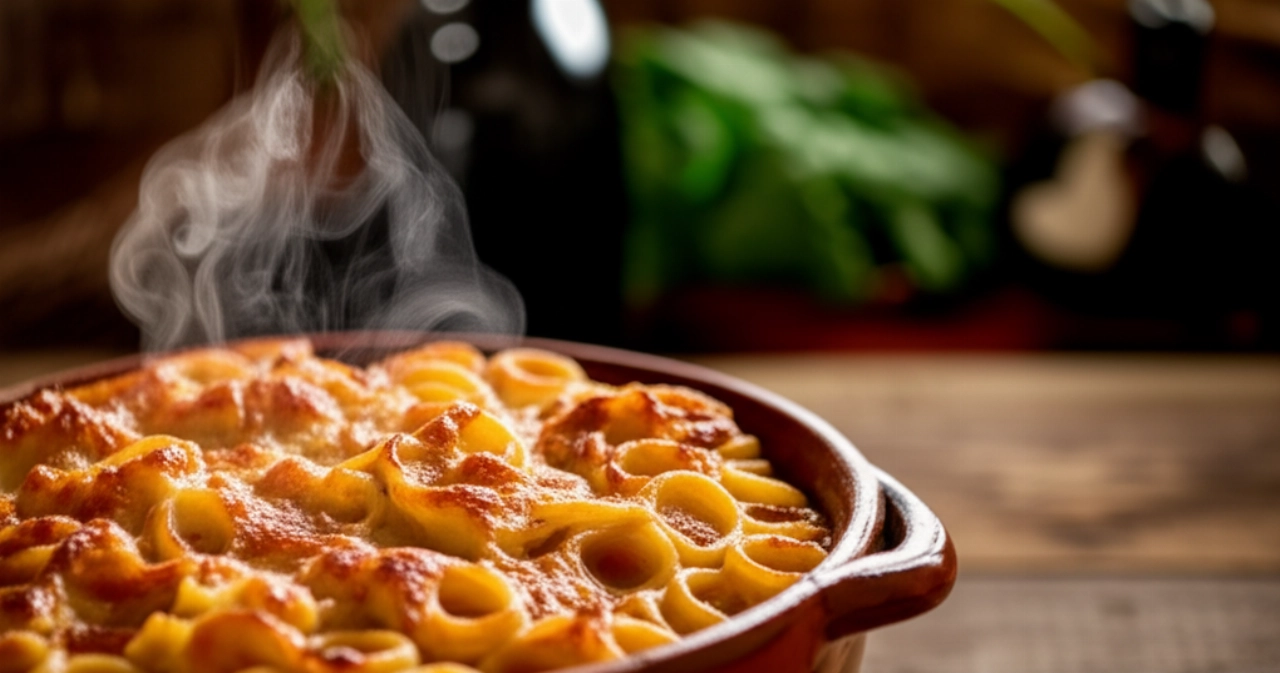There's a scent that speaks of celebration, home, and ancient traditions passed down from generation to generation. It's the aroma of Molise Fiadoni, those baked cheese ravioli that are a true embrace for the soul, a symbol of Molise cuisine that captivates at first bite.
But how many times have you tried to make them and they opened up during baking, or the filling wasn't quite right, or the dough was too tough? Finding 'that true' recipe, the one that makes you feel like you're in Molise, can seem like a daunting task, a labyrinth of conflicting advice that leaves you with more doubts than certainties.
Make yourself comfortable, because today Search Recipes opens the doors to grandma's kitchen. I won't just give you a list of ingredients, but a definitive guide, full of tricks and tips, to prepare perfect Molise Fiadoni, with a golden, fragrant crust and a stringy, flavorful filling. Success is guaranteed, and compliments will fly! Our promise? To guarantee the authenticity and perfection of the dough and filling, without them opening during baking, just like grandma used to make them in Molise.
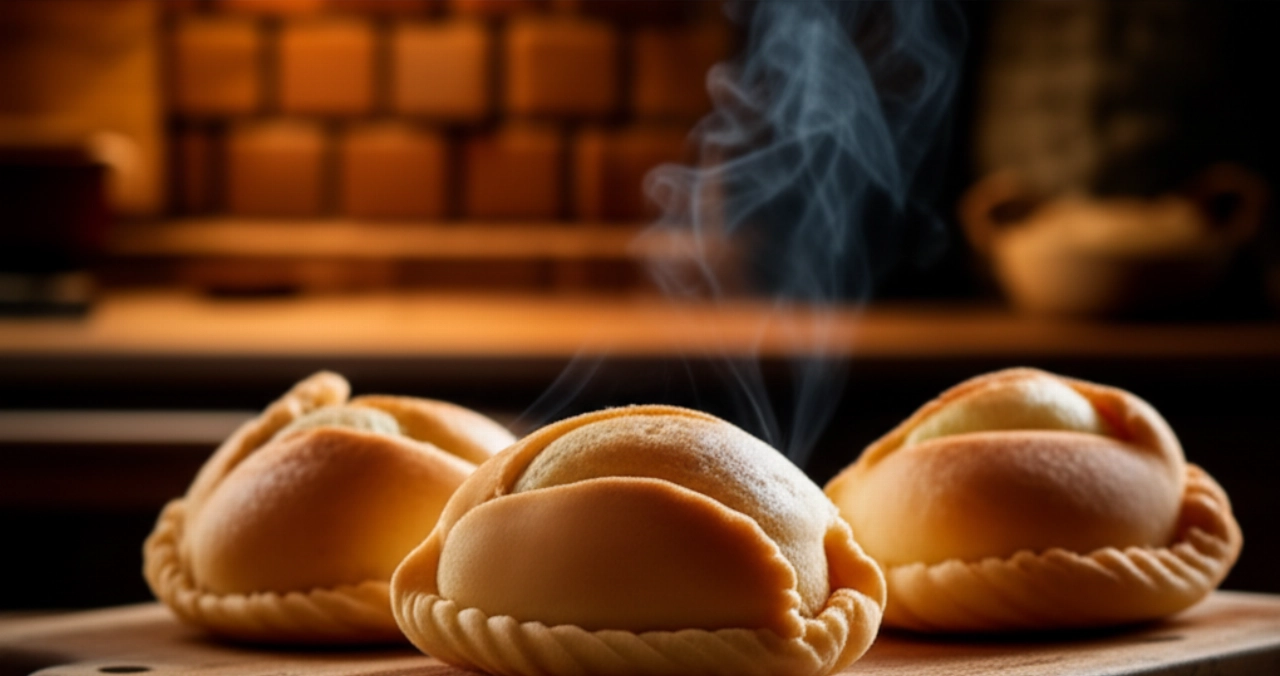
Smart Ingredients for Authentic Fiadoni: The Choice That Makes a Difference
For an impeccable result, ingredient quality is essential. It's not just about quantities, but about carefully choosing each element. Here's what you'll need and why:
For the Dough (the Pastry):
- 00 Flour (approx. 300g): The base of our pastry. Good soft wheat flour will give you an elastic and easy-to-work dough that won't break during baking.
- Fresh Eggs (3 medium): Bind the dough and give it color and flavor. Choose category A, preferably free-range eggs.
- Extra Virgin Olive Oil (2 tablespoons): Makes the pastry softer and more elastic, contributing to its crispiness after baking.
- Salt (a pinch): To enhance the flavor of the dough.
- Instant Yeast for Savory Pies (half a teaspoon, optional): A small secret for a slightly more fragrant pastry that puffs up delicately in the oven.
For the Filling (the Heart of the Fiadoni):
- Sheep's Milk Ricotta (300g, well-drained): This is the key ingredient for creaminess. Make sure it's very fresh and has lost all excess water, otherwise the filling will be too wet and the fiadoni might open up.
- Grated Aged Pecorino (100g): For a strong and authentic flavor. Choose Pecorino Romano or a Molise PDO Pecorino.
- Caciocavallo (100g, grated or finely chopped): Adds sweetness and that wonderful stringiness that makes Fiadoni irresistible. You can use fresh or semi-aged Caciocavallo.
- Eggs (2 medium): Bind the filling and give it structure.
- Salt and Black Pepper (to taste): To balance the flavors.
- Nutmeg (a pinch): Grated at the moment, it adds an unmistakable aromatic touch that enhances the cheeses.
For Brushing:
- Egg Yolk (1): For a perfect, glossy golden finish.
- Milk (1 tablespoon): To dilute the yolk and make brushing easier.
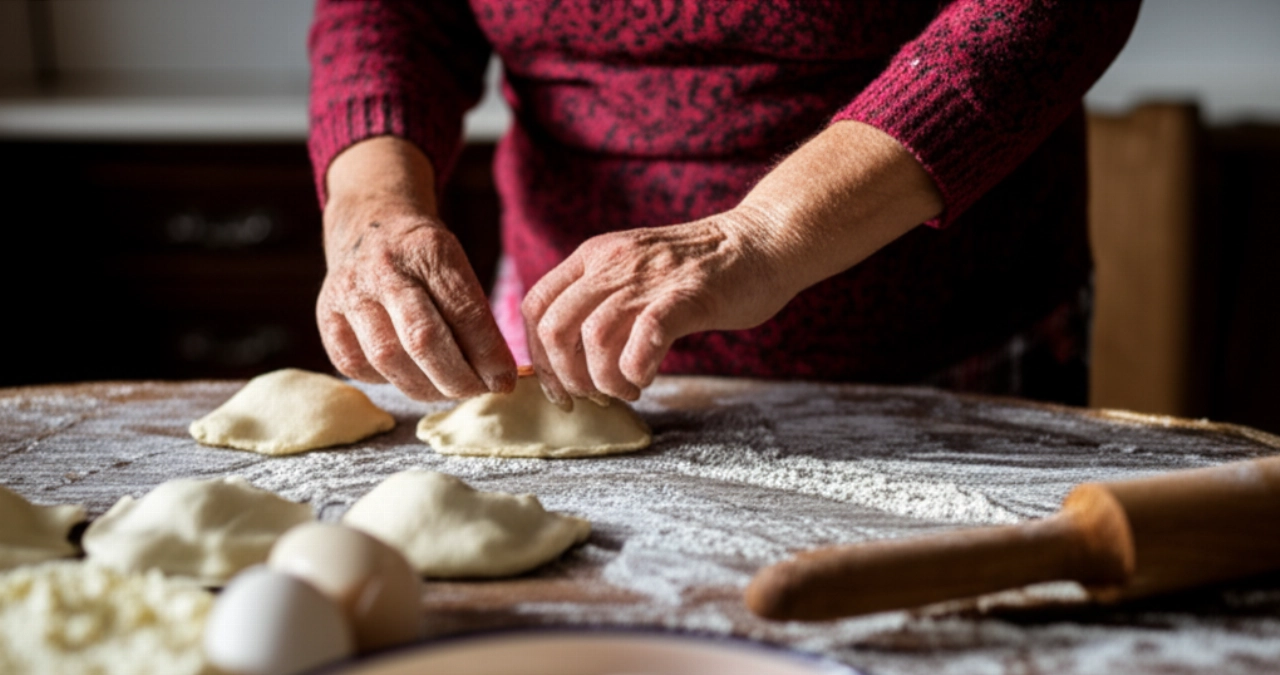
The 3 Mistakes to Avoid for Perfect Fiadoni (and How to Prevent Them)
Preparing Fiadoni is an art, but even the most experienced grandmothers learned from their mistakes. Here are the most common pitfalls and how to avoid them for a guaranteed result:
- Dough too thin or too thick: If the dough is too thin, it risks breaking during handling or baking, causing the filling to leak out. If it's too thick, the Fiadoni will be gummy and heavy. The secret is a thickness of about 2-3 millimeters, almost transparent, but resistant.
- Filling too wet: This is the most common mistake! If the ricotta hasn't been well-drained, it will release water during baking, causing the Fiadoni to puff up and then break. Make sure to press the ricotta well in a colander for at least an hour, or even longer, before using it.
- Careless sealing: Each fiadone must be perfectly sealed. If the edges are not well pressed, the filling will come out and burn. Take the necessary time to seal carefully, perhaps using the tines of a fork for a decorative touch and an extra secure seal.
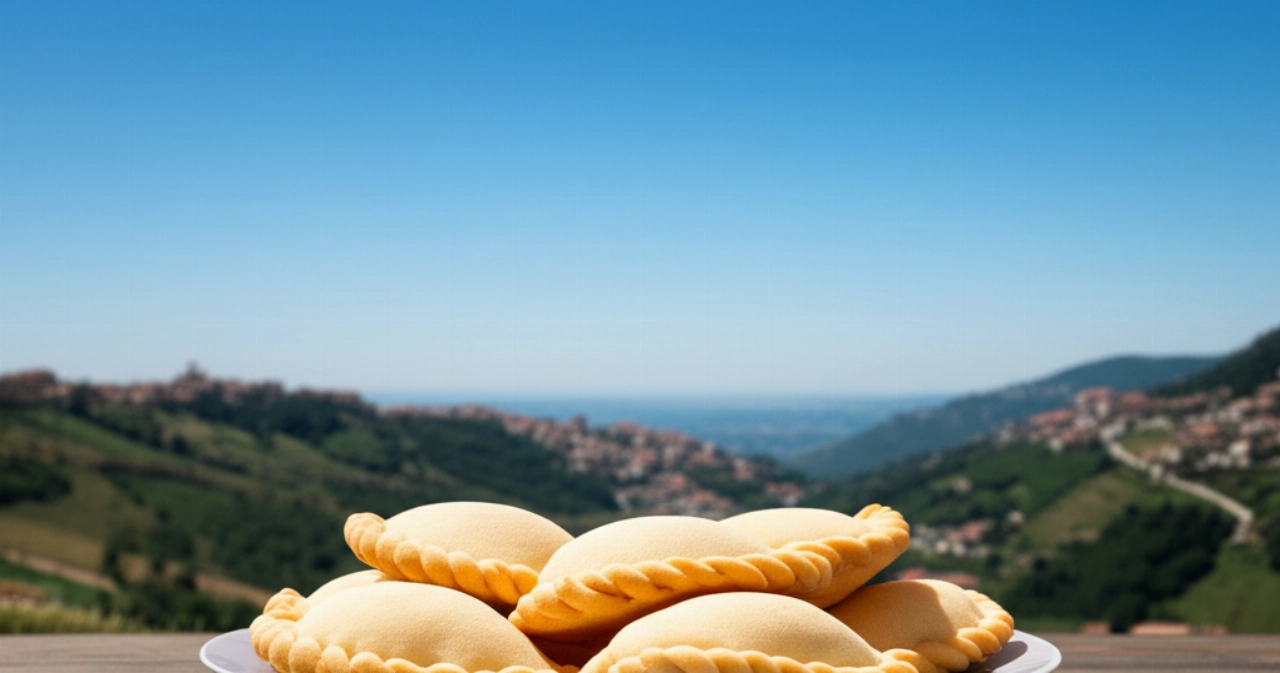
Grandma's Secret: That Extra Touch That Makes Fiadoni Unforgettable
My grandmother always used to say: 'The secret to Fiadoni isn't just in the ingredients, but in how you feel them in your hands and the aroma that fills the kitchen.' She had a couple of tricks that made her Fiadoni legendary.
The first was adding a pinch of instant yeast for savory pies to the dough. Not enough to make it rise like bread, but just enough to make it slightly more crumbly and fragrant after baking, with an internal air pocket that made it almost ethereal.
The second, and perhaps most important, was the nutmeg in the filling. Not just any sprinkle, but freshly grated, generously. That warm, enveloping aroma blended with the cheeses, elevating the flavor and giving the Fiadoni an unmistakable soul. 'It's the smell of home,' she would say, 'the one that takes you back to childhood.'
Let's Prepare Molise Fiadoni Together: The Step-by-Step Guide for Guaranteed Success
Now that we have all the secrets, let's get cooking. I'll guide you step by step, without rushing, to create your perfect Fiadoni.
1. Prepare the Dough (the Pastry):
- On a clean work surface, form a well with the flour. In the center, crack the eggs, add the extra virgin olive oil, a pinch of salt, and the yeast (if using).
- With a fork, start mixing the ingredients from the center, gradually incorporating the flour from the edges.
- When the dough starts to come together, knead it vigorously with your hands for at least 10-15 minutes. You should obtain a smooth, elastic, and homogeneous ball of dough. The more you work it, the more resistant and easy to roll out the pastry will be.
- Cover the dough ball with plastic wrap or a damp cloth and let it rest at room temperature for at least 30 minutes. This will allow the gluten to relax, making the pastry more elastic.
2. Prepare the Filling:
- In a large bowl, combine the sheep's milk ricotta, which you will have previously drained very well.
- Add the grated aged pecorino, finely chopped caciocavallo, the two whole eggs, a pinch of salt, and a generous grinding of black pepper.
- Grate some nutmeg directly into the mixture.
- With a spoon or spatula, mix all the ingredients well until you obtain a homogeneous, compact, and well-combined mixture. Taste and, if necessary, adjust salt or pepper.
3. Form the Fiadoni:
- Take the rested dough. Divide it into small portions to make rolling easier.
- With the help of a pasta machine (rolling the dough to the second or third thinnest setting) or a rolling pin, roll out a thin sheet of dough, about 2-3 millimeters thick.
- Using a round pastry cutter (or a glass) about 8-10 cm in diameter, cut out many dough discs.
- In the center of each disc, place a generous teaspoon of filling. Don't overfill, otherwise it will be difficult to close!
- Fold the disc into a half-moon shape, making sure the edges meet well. Press gently with your fingers to seal, then, for extra security and an aesthetic touch, seal the edges with the tines of a fork.
- Arrange the fiadoni one by one on a baking sheet lined with parchment paper, leaving some space between them.
4. Bake the Fiadoni:
- Preheat the static oven to 180°C (350°F).
- In a small bowl, whisk the egg yolk with the tablespoon of milk.
- With a pastry brush, gently brush the surface of each fiadone. This will give them a beautiful golden color and a shiny appearance.
- Bake the fiadoni in the hot oven for about 20-25 minutes, or until they are golden brown and puffed up. Baking time may vary slightly depending on your oven.
- Once baked, remove the Fiadoni from the oven and let them cool slightly before serving. They are delicious both warm and at room temperature.
Tips and Frequently Asked Questions about Molise Fiadoni
To clear up any doubts and ensure even greater success, here are some of the questions we are most frequently asked:
Can I use other cheeses in the filling?
Certainly! Molise tradition calls for Pecorino and Caciocavallo, but you can experiment with other hard or semi-hard cheeses you like, such as Parmigiano Reggiano, Provolone, or even a bit of smoked scamorza for a different touch. The important thing is to maintain the balance between savory and sweeter cheeses, and ensure they don't release too much water.
How can I prevent the Fiadoni from opening during baking?
There are three key points: 1. Drain the ricotta perfectly: this is crucial. 2. Do not overfill the discs: a generous teaspoon is sufficient. 3. Seal the edges with extreme care: press well with your fingers and then use the tines of a fork for double security.
Can I prepare Fiadoni in advance or freeze them?
Absolutely! You can prepare the Fiadoni and bake them the next day by storing them in the refrigerator on a tray covered with plastic wrap. Alternatively, you can freeze them raw: arrange them on a tray without touching, freeze them for a couple of hours, then transfer them to freezer bags. When you want to bake them, bake them directly from frozen, slightly increasing the cooking time.
What is the secret to a perfect pastry?
The secret lies in the dough and resting. Work the dough for a long time and vigorously to develop the gluten well, making it elastic. Then, let it rest: this relaxes the dough and makes it much easier to roll out thinly without shrinking or tearing.
Are Fiadoni always baked or are there fried versions?
Traditional Molise Fiadoni are typically baked, which gives them that golden crust and a soft filling. There are regional variations of savory ravioli that can be fried, but for Molise Fiadoni, baking is the preferred cooking method to best appreciate their authenticity.
A Masterpiece of Flavor and Tradition: Your Molise Fiadoni Are Ready!
There you have it! Now you no longer just have a recipe, but all the secrets to bring a piece of Molise to your table, an authentic flavor that speaks of history, passion, and that love only traditional cuisine can offer. Your Molise Fiadoni will be a triumph of flavors and aromas, a true masterpiece that will fill you with pride and earn you resounding applause.
Don't be afraid to challenge yourself. Cooking is a journey, an act of creativity and love. With this guide, you have the map to success. Prepare these Fiadoni and you'll see your table filled with smiles and compliments.
Have you prepared your Molise Fiadoni following our tips? We can't wait to hear how it went! Leave a comment below, share your experience, or tag us on Instagram with @CercaRicette.it. And if you loved this recipe, don't miss our guide to preparing perfect Spaghetti alla Chitarra or our secret for an unforgettable Termolese Fish Brodetto!
